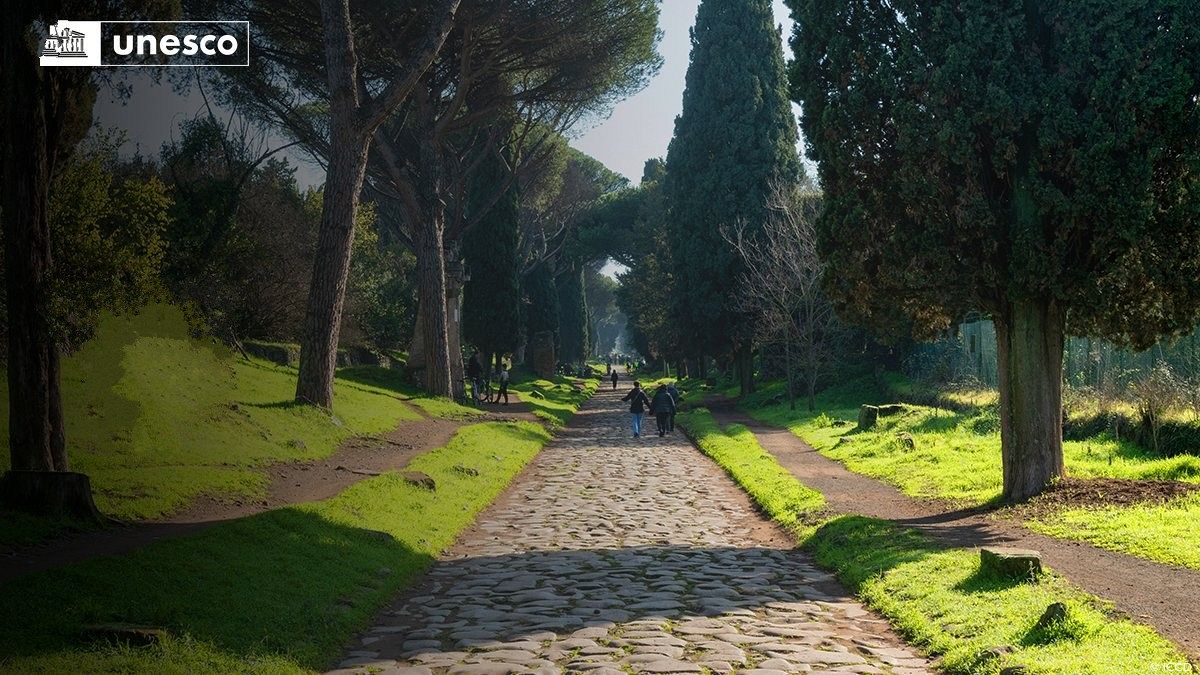Health
CDC’s comments on today’s pneumonia outbreaks vs. the early COVID cases, as compared by experts
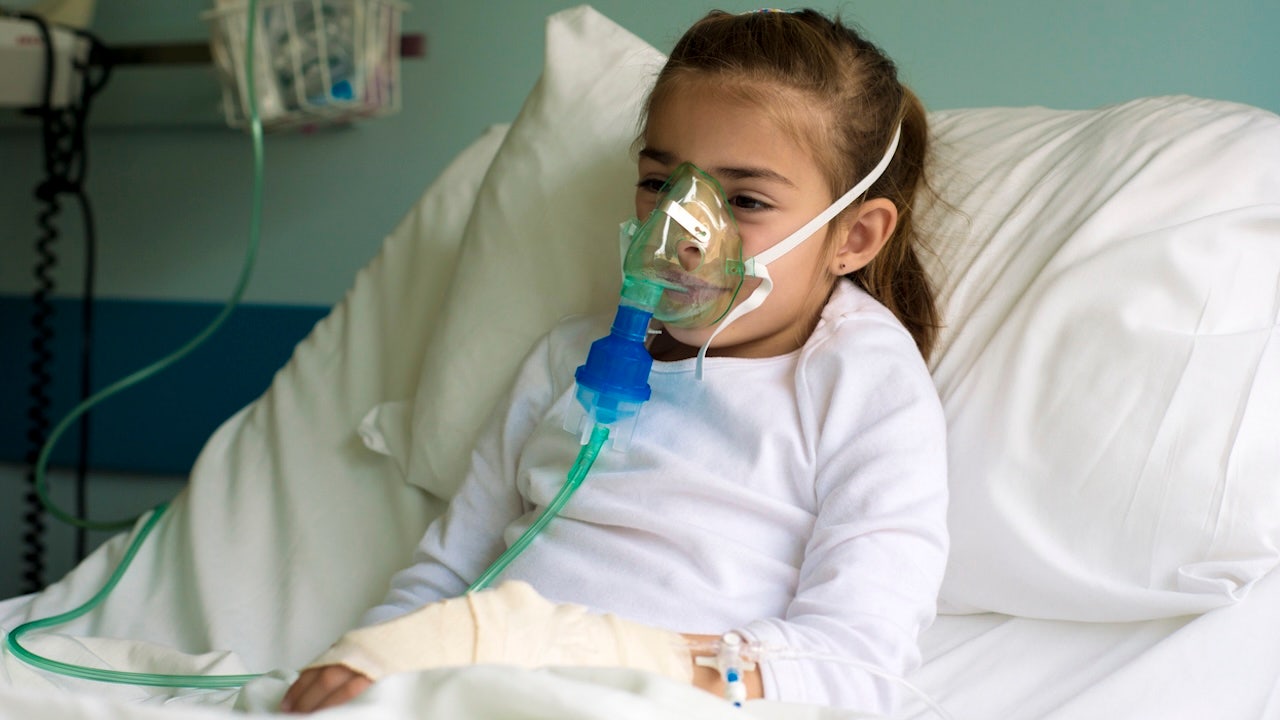
Pediatric pneumonia outbreaks in multiple countries have some doctors and families concerned — but statements from public health agencies suggest there’s no cause for alarm. This is similar to their initial reactions to the COVID-19 pandemic, many are saying.
Hospitals in China have reportedly been “overwhelmed with sick children” as a result of the pneumonia outbreak, according to ProMED, the global digital disease surveillance system.
Also, the Netherlands Institute for Health Services Research (NIVEL) has reported a surge in cases — as have some U.S. states, including Ohio and Massachusetts.
AMID CHILDHOOD PNEUMONIA OUTBREAKS, INFECTIOUS DISEASES EXPERT REVEALS KEY FACTS ABOUT ‘WHITE LUNG SYNDROME’
The Centers for Disease Control and Prevention (CDC) on Dec. 1 sent the following statement to Fox News medical contributor Dr. Marc Siegel: “As of today, the CDC is not seeing anything out of the ordinary related to levels of mycoplasma across the country, but we are watching it closely.”
On its website, the agency stated that it is “monitoring reports of increased respiratory illness around the world,” and that “diagnosis of pneumonia in children, along with other respiratory illnesses, increases every year in the fall and winter months.”
Pediatric pneumonia outbreaks in multiple countries have some doctors and families concerned — but statements from public health agencies suggest there is no cause for alarm. (iStock)
The agency also noted that the number of children seeking emergency care for diagnosed pneumonia is “largely consistent with previous years” for children aged 0 to 4 years, with “slight increases above typical levels” for children aged 5 to 17.
CHILDHOOD PNEUMONIA SURGE REPORTED IN NETHERLANDS AMID OUTBREAK IN CHINA
“These increases are likely caused by viruses and bacteria [that] we expect to see during the respiratory illness season,” the CDC said.
The World Health Organization (WHO), too, has chalked up the outbreaks to known respiratory diseases rather than novel viruses.
“As of now, at the present time, Chinese surveillance and hospital systems report that the clinical manifestations are caused by known pathogens in circulation,” WHO said on its website.
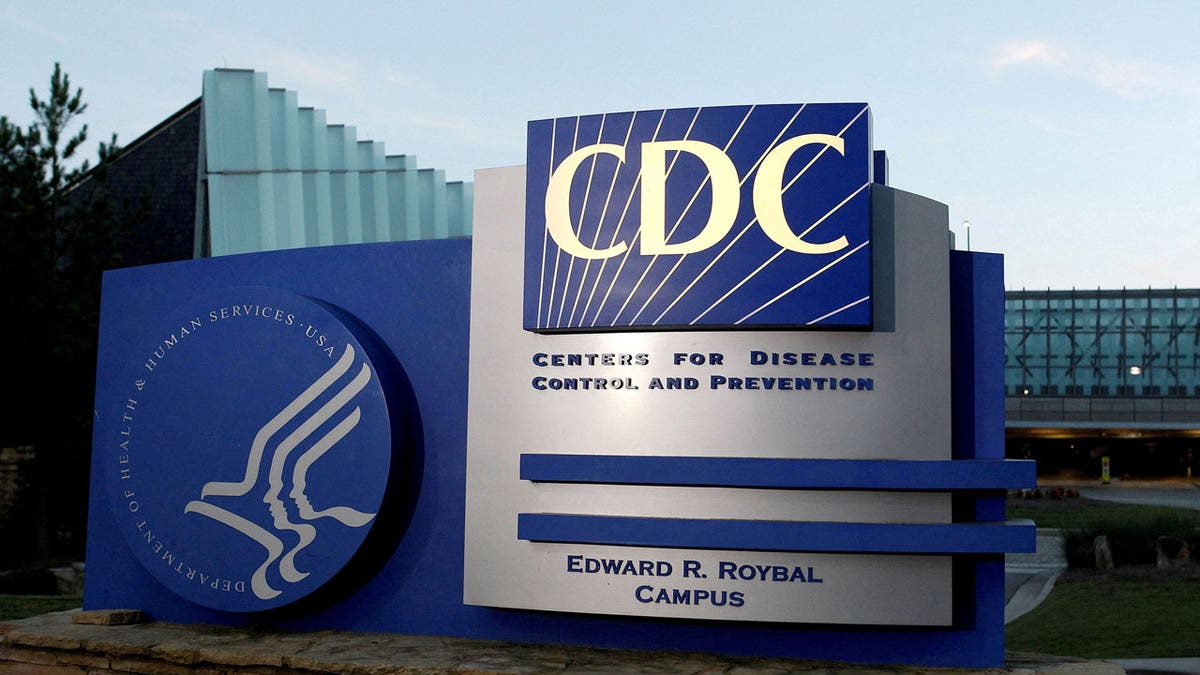
“These increases are likely caused by viruses and bacteria we expect to see during the respiratory illness season,” the CDC stated on its website. (REUTERS/Tami Chappell)
“Mycoplasma pneumoniae is a common respiratory pathogen and a common cause of pediatric pneumonia, and is readily treated with antibiotics,” the agency also said.
“Due to the arrival of the winter season, the increasing trend in respiratory illnesses is expected; co-circulation of respiratory viruses may increase the burden on health care facilities,” it added.
With the current childhood pneumonia outbreak in China, Siegel said that both the CDC and WHO have been “upfront asserting that it is not a new pathogen.”

Fox News medical contributor Dr. Marc Siegel weighed in on the CDC’s reactions to COVID in 2020 — and to the reactions today to pneumonia in 2023. (Fox News)
“There is less of a sense of suppressing information, and the high incidence of resistant mycoplasma infection associated with the outbreak has also been clear,” he went on.
“The CDC has also done a good job of tracking cases here, and asserting that there is no connection and that the incidence of mycoplasma has not increased,” said Siegel. “They are monitoring the situation very closely, which appears to be a real improvement over early 2020.”
Comparison to COVID reactions
The health agencies’ reactions to the current pneumonia outbreaks in late 2023 have been compared to the agencies’ initial reactions to the COVID-19 virus in 2020.
“The CDC is our microbiologic liaison to the world. It is our surveillance system. It is our eyes and ears.”
In testimony to Congress on Feb. 27, 2020, then-CDC director Dr. Robert Redfield stated that “most cases of COVID-19 in the United States have been associated with travel from China, but some person-to-person spread among close contacts of travelers has been seen.”
CHILDHOOD PNEUMONIA OUTBREAK IS REPORTED IN SOUTHWESTERN OHIO: ‘LARGE UPTICK’
He also said, “It’s important to note that this virus is not spreading within American communities at this time.”
He went on, “The potential global public health threat posed by this virus is high, but right now, the immediate risk to most Americans is low. The greater risk is for people who have recently traveled to China or been exposed to someone with COVID-19.”
Dr. Brett Osborn, a Florida neurosurgeon and longevity expert, noted that in the early days of the COVID-19 pandemic, before the virus entered the U.S., “the CDC was relatively close-lipped about its specific details.”

Dr. Brett Osborn, a Florida neurosurgeon and longevity expert, noted that in the early days of the COVID-19 pandemic before the virus entered the U.S., “the CDC was relatively close-lipped about its specific details.” (Dr. Brett Osborn)
“To mitigate the risk of a similar occurrence — and the United States again being caught off-guard — Congress submitted a battery of questions to the CDC demanding answers about the recent pneumonia outbreak in China,” Osborn told Fox News Digital. “The agency has yet to respond.”
“It is widely known that China thwarted international efforts, including efforts by the CDC, to respond to the burgeoning COVID-19 crisis as it began to unfold in China.”
In a Nov. 29 letter from the U.S. Committee on Energy and Commerce to Centers for Disease Control and Prevention director Mandy Cohen, committee chairs wrote the following: “The Centers for Disease Control and Protection’s (CDC) failure to communicate accurate information in real-time during the COVID-19 pandemic has undermined public trust in the agency. If the CDC is to regain credibility with the American people, it must be transparent and forthcoming with the information it has on public health threats facing our nation.”
CLICK HERE TO SIGN UP FOR OUR HEALTH NEWSLETTER
“It is widely known that China thwarted international efforts, including efforts by the CDC, to respond to the burgeoning COVID-19 crisis as it began to unfold in China.”
“It would be an abdication of the CDC’s duty to the American people if it allows China to repeat its misdeeds from the COVID-19 pandemic. The American people should not have to rely on the unaccountable and untrustworthy WHO to communicate information about Chinese public health threats.”

Hospitals in China have reportedly been “overwhelmed with sick children” as a result of today’s pneumonia outbreak, according to ProMED, the global digital disease surveillance system. (iStock)
Siegel pointed out that with COVID, “the CDC was caught flat-footed, in large part because China was suppressing crucial public health information and CDC was not allowed to have ‘boots on the ground’ to investigate, which they repeatedly requested through CDC Director Robert Redfield.”
He also said, “They did post the structure of the virus online early, but little else.”
Adding to the problem, Siegel noted, was that the World Health Organization (WHO) called COVID a “regional problem only.”

Medical personnel administer tests for the coronavirus disease (COVID-19) at a pop-up testing center in Sydney, Australia, on July 30, 2020. (REUTERS/Loren Elliott/File Photo)
While preliminary data suggest that the pneumonia outbreaks are caused by known viruses — including RSV, mycoplasma and other common cold viruses — doctors and health authorities are calling for definitive answers.
“The CDC must drill down on the specifics and apply political pressure on China to best prepare the United States for another potential pandemic,” said Osborn. “Early warning is critical.”
“The CDC is our microbiologic liaison to the world. It is our surveillance system. It is our eyes and ears,” he went on.
“We are reliant on its liability to protect the nation through extreme transparency.”
As Osborn pointed out, “It is always best to err on the side of caution and alert the nation early of a potential problem, or else risk another COVID-19.”
Fox News Digital reached out to the CDC for comment.
For more Health articles, visit www.foxnews/health.

Health
Blue Zones and Mediterranean Diets: What the Longest Living Populations Are Doing Right | Woman's World

Sign Up
Create a free account to access exclusive content, play games, solve puzzles, test your pop-culture knowledge and receive special offers.
Already have an account? Login
Forgot your password?
Get back to the Sign In
Use left and right arrow keys to navigate between menu items.
Use escape to exit the menu.
Health
Hiker's death in Utah spotlights need for safety protocols on the trail
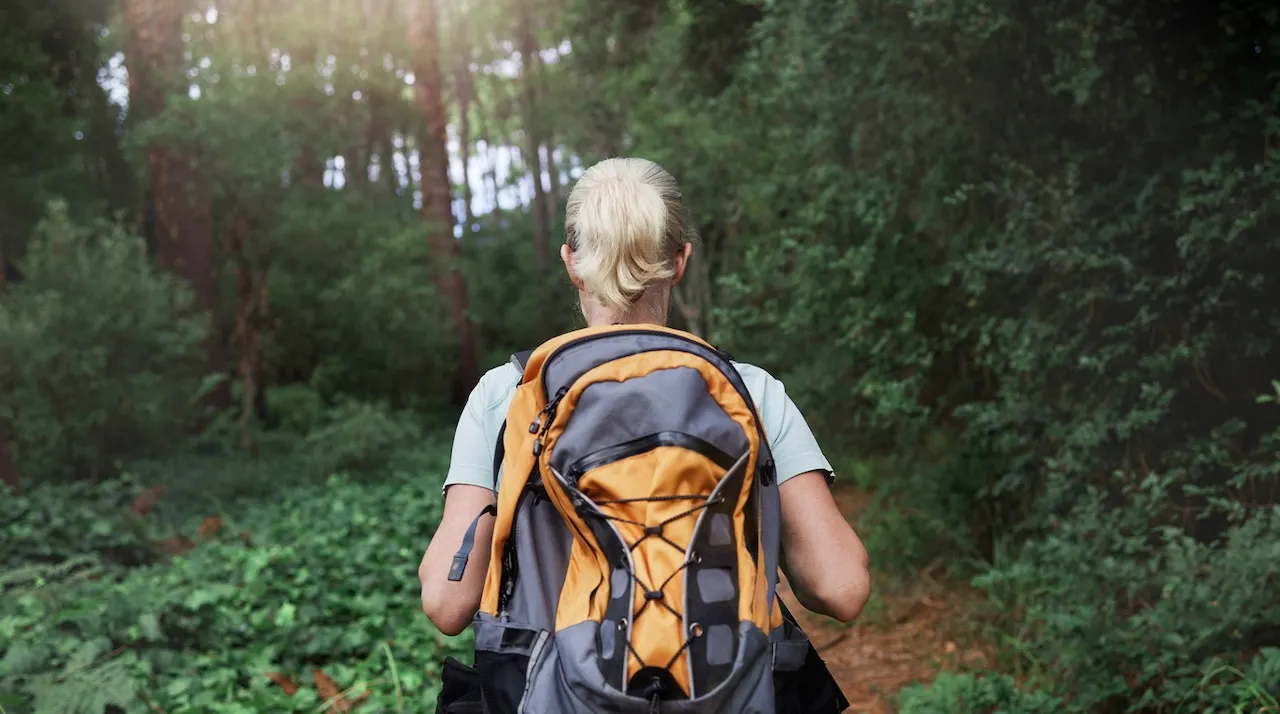
A female hiker died on Sunday on a trail near near Quail Creek State Park in southern Utah, according to local reports.
The woman, 56, who was not identified in the report, had sent out a distress call regarding lack of water and high temperatures, but by the time police arrived, she was unresponsive and pronounced dead at the scene.
The local temperature was 106 degrees Fahrenheit when the woman’s death was reported.
FIREFIGHTERS CARRY 160-POUND DOG DOWN OREGON MOUNTAIN AFTER PUP IS INJURED ON TRAIL
This recent hiking death and others, many of them heat-related, have spotlighted the need for safety protocols.
While experts agree that hiking is considered a good form of exercise, they stress the importance of being prepared before heading out on the trail, especially during the hot summer months.
Outdoor enthusiasts shared tips to help prevent trail hazards amid a flurry of recent hiking-related deaths this summer. (iStock)
Outdoor enthusiasts shared the following important tips to help prevent hiking hazards.
1. Study the hiking area before your trip
Before heading out on a hike, familiarize yourself with maps, landmarks and any restricted areas or required permits, say trail experts.
“Research the terrain, trail difficulty, weather conditions and local wildlife,” Joey Coe, a trip leader for Backroads, a California-based travel touring company, told Fox News Digital.
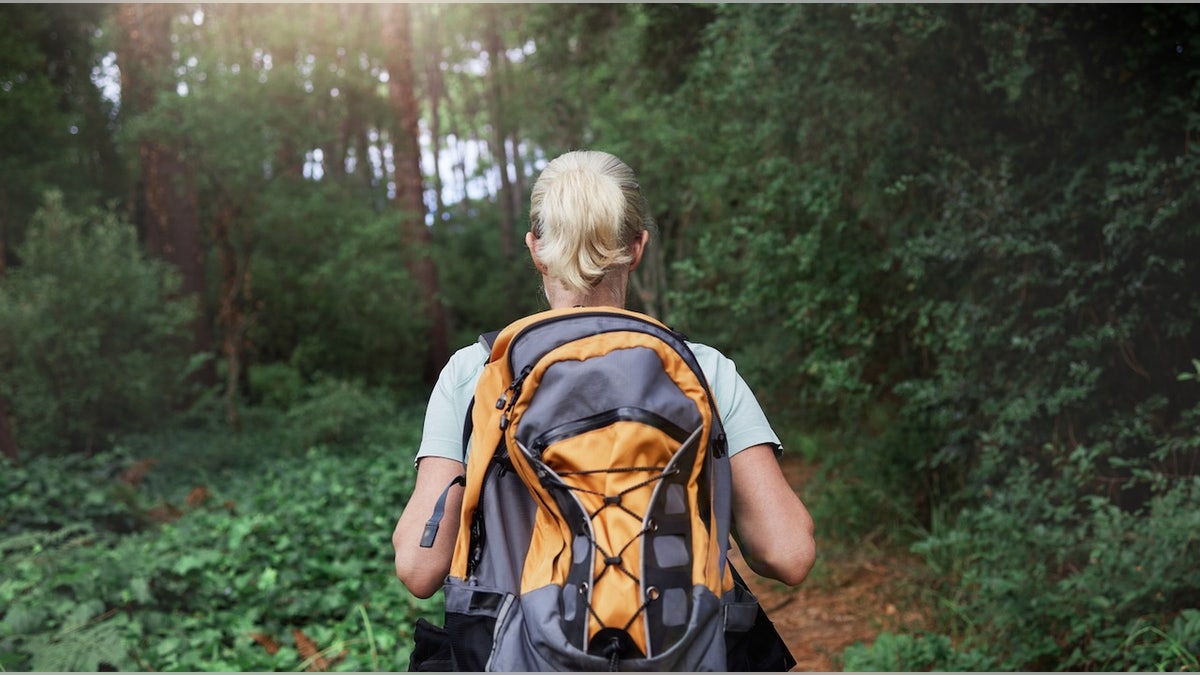
A female hiker (not pictured) died on Sunday on a trail near near Quail Creek State Park in southern Utah, according to local reports. (iStock)
Coe also suggested saving a photo of the trail map on your phone to reference while hiking.
Although cell phones and mapping apps can be helpful, it is important to have a backup paper map in the event of a lost signal, according to Guy deBrun, a lecturer at the Hart School of Hospitality, Sport & Recreation Management at James Madison University in Virginia.
WHAT IS A DERECHO? HERE’S A METEOROLOGICAL EXPLANATION AND OTHER INTERESTING FACTS
“Knowledge of how to use a paper map is imperative,” deBrun, who is also an instructor in wilderness first aid, told Fox News Digital in an email.
Hikers should also know the difficulty level of the planned route, according to the American Hiking Society, a nonprofit based in Silver Springs, Maryland.
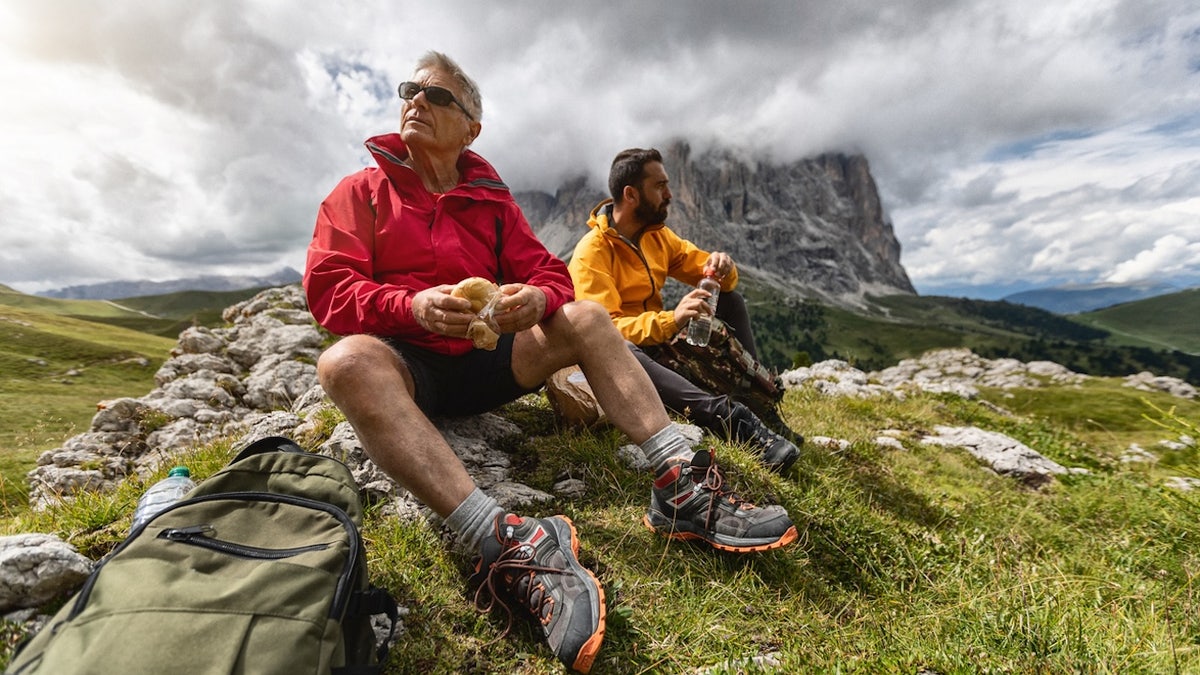
Pack lightweight, high-energy foods such as nuts, dried fruit, energy bars and sandwiches, and avoid bringing perishable items unless you have proper storage, experts said regarding outdoor hikes. (iStock)
“It’s also helpful to identify possible emergency exit points,” Maggie Peikon, manager of communications with the American Hiking Society, told Fox News Digital via email.
Online forums and trail reviews can also provide valuable information about the terrain, she added.
2. Set a ‘time plan’ for your hike
Whether you are setting off alone or with a group, let someone know your expected time frame for arriving at predetermined spots along the trail, experts recommend.
“Knowledge of how to use a paper map is imperative.”
One approach is to create a “time control plan,” which considers linear distance and elevation.
A general rule of thumb is to travel two miles per hour, adding one mile for every 1,000 feet of elevation gain.
“Most novices fail to plan for elevation gain,” deBrun told Fox News Digital.
TIKTOK TRENDING QUESTION ABOUT ‘BEING STUCK IN A FOREST’ WITH ‘A MAN OR A BEAR’ YIELDS STRATEGIC TIPS
“One thousand feet of elevation gain adds one mile to your total mileage. So, if you are hiking five miles and gaining 2,000 feet, you [should] consider it seven miles. Divide by two miles an hour to estimate your time.”
It is also important to project the amount of daylight you will have during your excursion to avoid returning in the dark if you don’t have the necessary gear to hike at night.
3. Know your limits
It’s best to start small and build, starting with short, easy, well-marked trails that match your fitness level, experts agreed.
“Take breaks as needed, and don’t push too hard,” said Coe.
Peikon added, “If you’re feeling too tired, or realize you’re not going to make it to your destination within the time frame you prepared for, turn around and err on the side of caution.”

Before heading out on a hike, trail experts recommend familiarizing yourself with maps, landmarks, and any restricted areas or required permits. (iStock)
It’s also important to stay on the trail, she said.
“Avoid taking shortcuts. Getting off the trail for any reason can easily result in becoming directionally disoriented and getting lost.”
4. Maintain a safe distance when hiking
Aim to keep a distance of at least a few feet between hikers to avoid accidents and allow space for wildlife, experts advised.
For people hiking in a group, it’s best to avoid taking up the whole trail width, according to the American Hiking Society.
WEAR SUNSCREEN THE RIGHT WAY THIS SUMMER BY UNDERSTANDING SPF AND THE PROPER APPLICATION PROCESS
Hikers going downhill should yield to those going uphill.
Also, be wary of potential poisonous vegetation in that region so you can keep a safe distance and avoid accidental contact, experts cautioned.
5. Prepare for weather conditions
Hikers should consider local weather patterns when deciding what to wear on a hike, experts told Fox News Digital.
“In many mountainous areas, lightning storms regularly occur in the afternoon,” deBrun said. “Hikers should take this into account.”
Coe recommended dressing in layers to help adjust to changing temperatures.
“Moisture-wicking, quick-drying materials are best,” he said.

In areas where bears are prevalent, experts suggest packing bear spray to use in the event of an unexpected encounter. (iStock)
Bring a hat, sunglasses, sunscreen and rain gear, experts advised.
For family hiking trips, it’s important to be aware of children’s body temperature. “If you are carrying a child, he or she may be cold while you are burning up,” Peikon said.
NEW YORK STATE FISHING RECORD BROKEN WITH SPECIES DATING BACK 100 MILLION YEARS
“Conversely, you may feel chilled while your child is warm from running around and playing.”
If multiple children are on the hike, dress them in bright, visible clothing so you can more easily spot them, Peikon said.
6. Wear comfortable, supportive footwear
Multiple hiking trip leaders suggested wearing sturdy, well-fitted hiking boots with good ankle support.
“Break them in before your trip to avoid blisters,” Coe cautioned.
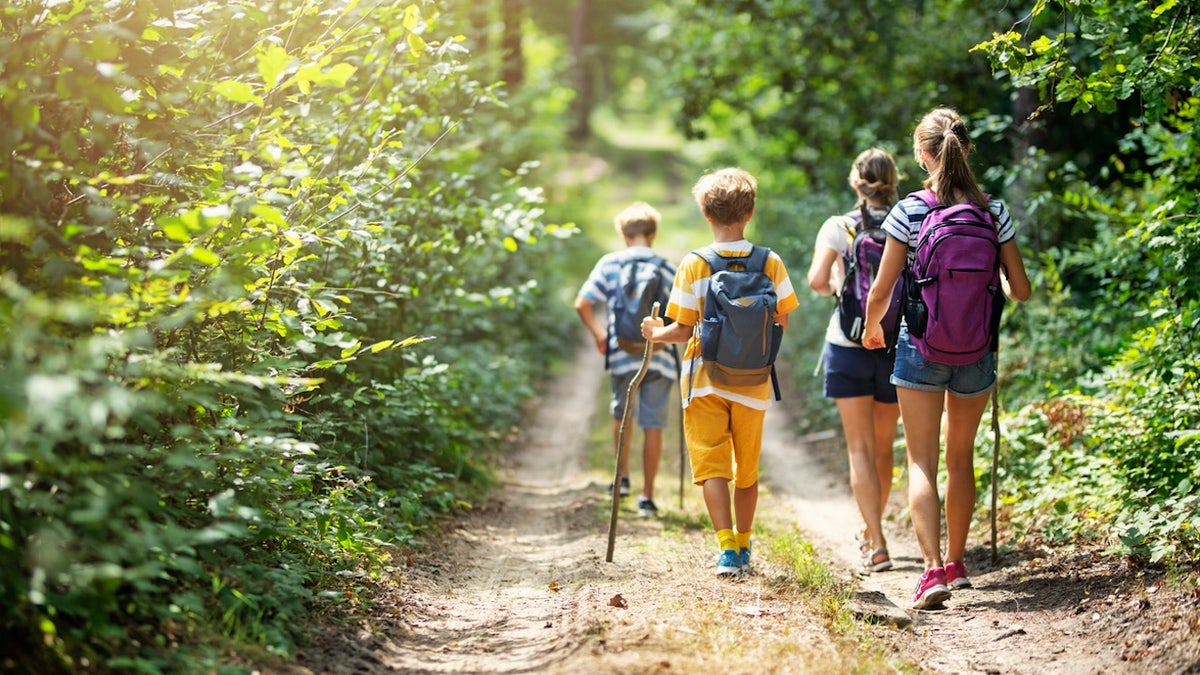
If multiple children are on the hike, dress them in bright, visible clothing so you can more easily spot them, an expert said. (iStock)
Running shoes or trail runners can be appropriate, deBrun said, but hiking boots may be more appropriate in wet or rocky terrain.
7. Bring along essential equipment
Pack a compass or GPS, whistle, flashlight, a basic first aid kit and trekking poles (if needed), said experts.
Teach children to blow the whistle several times in the event they wander away from the group, they also advised.
Pack a compass or GPS, whistle, flashlight, a basic first aid kit and trekking poles (if needed).
“Be aware of your group’s medical needs and any potential allergies,” Coe said.
Hikers might also want to consider taking a wilderness first aid course, he added.
In areas where bears are prevalent, experts suggest packing bear spray to use in the event of an unexpected encounter.
It’s also a good idea to check with local animal experts about how to navigate an encounter with wildlife.
8. Stay fueled and hydrated
Pack lightweight, high-energy foods such as nuts, dried fruit, energy bars and sandwiches, and avoid bringing perishable items unless you have proper storage, experts said.
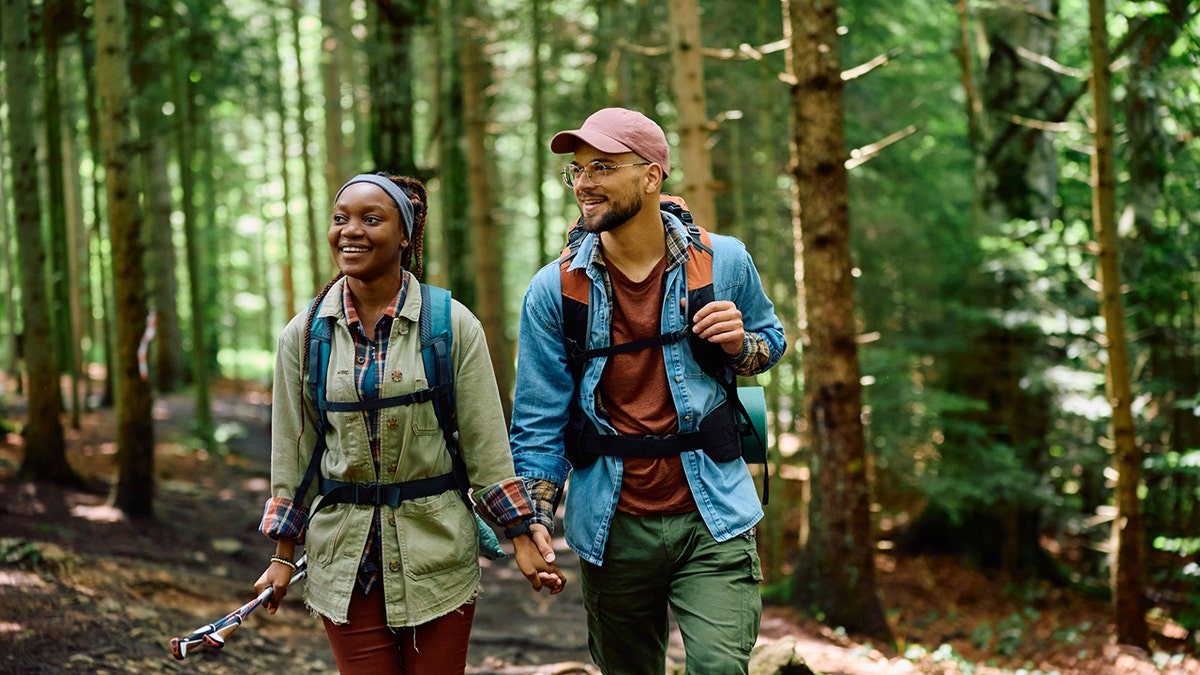
Aim to keep a distance of at least a few feet between hikers to avoid accidents and allow space for wildlife, experts advised. (iStock)
It is also important to leave no trace of food behind.
“Carry out all trash and leftover food to avoid attracting wildlife and to prevent littering,” Coe advised.
CLICK HERE TO SIGN UP FOR OUR HEALTH NEWSLETTER
Packing enough water is essential.
“Bring at least half a liter of water for every hour you plan to be hiking,” Peikon said — even more when hiking in the heat.

Selfies can distract hikers from their surroundings, which can increase the risk of falls or cause them to miss a hazard, according to hiking experts. (iStock)
Very few water sources are safe to drink without purification, deBrun cautioned.
“Research water sources and bring a water purification system for longer hikes,” he said.
9. Use caution with cellphones and selfies
Selfies can distract hikers from their surroundings, which can increase the risk of falls or cause them to miss a hazard, according to hiking experts.
“It is always tragic to hear of fatalities due to selfies, which does happen every year in U.S. national parks,” Coe told Fox News Digital.
For more Health articles, visit www.foxnews/health
If you need to use your phone, stop walking and stay aware of your surroundings, he said.
“Use your phone only for emergency calls and navigation as needed,” Coe added.
Melissa Rudy of Fox News Digital contributed reporting.
Health
How an Iron Deficiency Can Result in Hair Loss, Plus the Easy Ways To Fix It Including a Real-Life Success Story

Sign Up
Create a free account to access exclusive content, play games, solve puzzles, test your pop-culture knowledge and receive special offers.
Already have an account? Login
Forgot your password?
Get back to the Sign In
Use left and right arrow keys to navigate between menu items.
Use escape to exit the menu.
-

 World1 week ago
World1 week agoOne dead after car crashes into restaurant in Paris
-

 Midwest1 week ago
Midwest1 week agoMichigan rep posts video response to Stephen Colbert's joke about his RNC speech: 'Touché'
-

 News1 week ago
News1 week agoVideo: Young Republicans on Why Their Party Isn’t Reaching Gen Z (And What They Can Do About It)
-

 Movie Reviews1 week ago
Movie Reviews1 week agoMovie Review: A new generation drives into the storm in rousing ‘Twisters’
-

 Politics1 week ago
Politics1 week agoFox News Politics: The Call is Coming from Inside the House
-

 News1 week ago
News1 week agoVideo: J.D. Vance Accepts Vice-Presidential Nomination
-

 World1 week ago
World1 week agoTrump to take RNC stage for first speech since assassination attempt
-

 News1 week ago
News1 week agoRNC speakers want to separate the president from the person to show softer side of Trump












